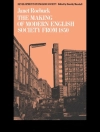This electronic version has been made available under a Creative Commons (BY-NC-ND) open access license. Looks at why witch-trials failed to gain momentum and escalate into ‘witch-crazes’ in certain parts of early modern Europe. Exames the rich legal records of the German city of Rothenburg ob der Tauber, a city which experienced a very restrained pattern of witch-trials and just one execution for witchcraft between 1561 and 1652. Explores the social and psychological conflicts that lay behind the making of accusations and confessions of witchcraft. Offers insights into other areas of early modern life, such as experiences of and beliefs about communal conflict, magic, motherhood, childhood and illness. Offers a critique of existing explanations for the gender bias of witch-trials, and a new explanation as to why most witches were women.
Содержание
Acknowledgements Map Introduction 1. ‘An honourable man should not talk about that which he cannot prove’: slander and speech about witchcraft 2. The devil’s power to delude: elite beliefs about witchcraft and magic 3. ‘One cannot … hope to obtain the slightest certainty from him’: the first child-witch in Rothenburg, 1587 4. ‘When will the burning start here?’: the Catholic challenge during the Thirty Years’ War 5. Posion, seduction and magical theft: gender and contemporary fantasies of witchcraft 6. ‘God will punish both poor and rich’: the idioms and risks of defiance in the trial of Margaretha Horn, 1652 Conclusion Appendix: Trials for witchcraft in Rothenburg ob der Tauber, 1549-1709 Bibliography Index
Об авторе
William G. Naphy is Senior Lecturer in History and Head of Department at the University of Aberdeen












